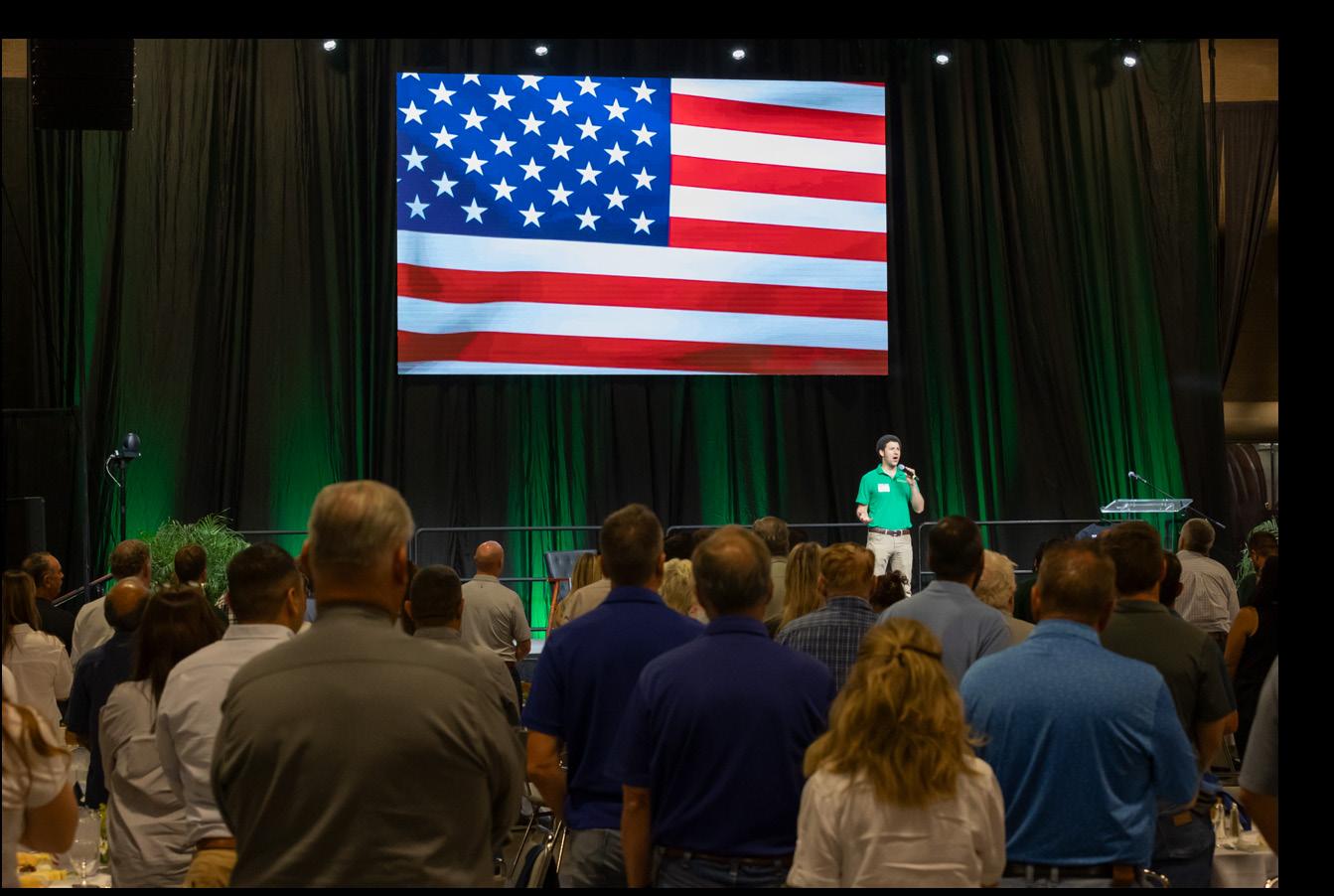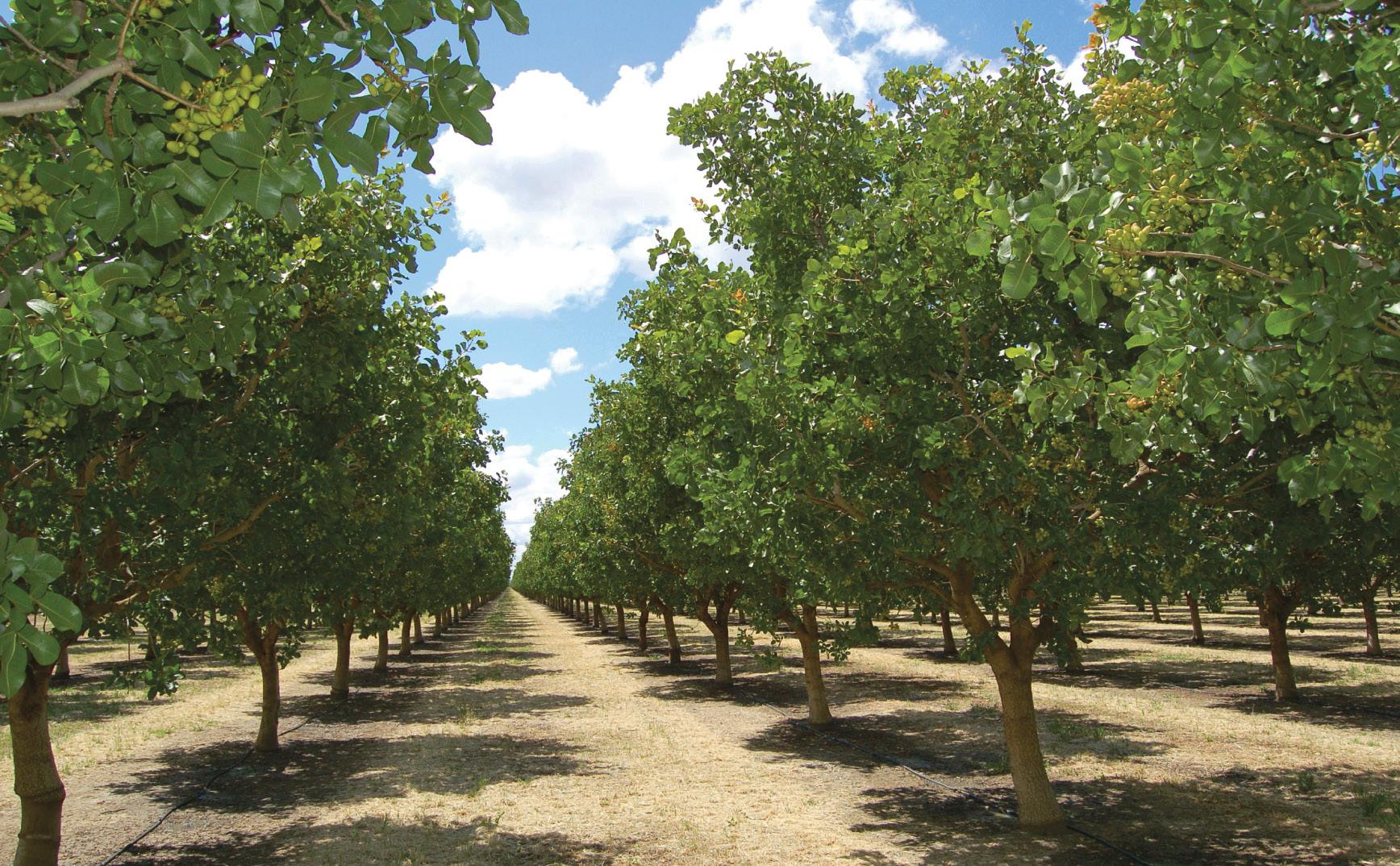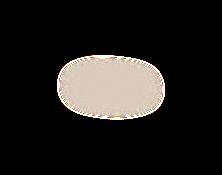American Pistachio Growers





INSIDE
- Annual Member Luncheon

- New Ad Hoc Sustainability Committee
- 2nd Annual Pistachio Week
- September Orchard Tips

July 28, 2023 – Visalia, CA


APG members came together for the Annual Member Luncheon in Visalia, on July 28. APG staff members welcomed over 400 attendees to the annual summer event.


APG LeadOn participant, Matthew Malcolm, kicked things off by singing the National Anthem.


APG Director of Government Relations, Cadee Condit, introduced California State Senator Shannon Grove of Bakersfield, California, who has been a great friend and legislator to APG and the agricultural community. Senator Grove recently introduced a bill to make sex trafficking a minor felony in California, making national headlines and garnering positive attention, and is now in the legislative process. Cadee took a moment during the luncheon to thank Senator Grove for protecting agriculture and California’s children.




The annual summer luncheon is an event for both new and longtime members of APG to gather before harvest. It is an opportunity to network, get an update on APG activities and learn about what is happening in the industry.








APG President Richard Matoian provided members with an update on the state of the industry, offering the predicted US pistachio crop this year, and explained that, based on current shipment projects for the remaining months of the current shipment Fiscal Year, pistachios will hit record shipments for the third year in a row. He also presented the process in which APG utilizes PR agencies in all export markets to ensure there is a cohesive global marketing strategy that is tailored to each market. He then introduced APG’s new Sustainability ad hoc committee, chaired by Karun Samran of Bapu Farming Company.

COMMITTEE MEMBERS




The new Ad Hoc Sustainability Committee was developed to explore how we can be more sustainable to ensure the marketability of pistachios, as sustainability will be a driving force of buyers and consumers. This committee will seek to establish credibility by collaborating with universities and institutions on studies and projects. It will focus on topics such as improving soil health, pesticide MRLs (Maximum Residue Levels), pesticide use reduction, and groundwater recharge, just to name a few.
If you are interested in joining the committee, please click here to submit a request. Limited spots are available.

 Bob Engleman Rich Kreps
Mike Smith Justin Wylie
Bob Engleman Rich Kreps
Mike Smith Justin Wylie






 Amber Wilson, APG Director of Nutrition Research and Communications, explained the importance of nutrition research, which is the first step of the global marketing communications process.
APG Board Member, Rich Kreps, announced the 2nd Annual Pistachio Week.
Haiying Zhang, Senior Director of Global Marketing for APG, presented APG’s 4-step marketing communications process and showed how APG’s positive research findings provide the foundation for the global marketing program.
Amber Wilson, APG Director of Nutrition Research and Communications, explained the importance of nutrition research, which is the first step of the global marketing communications process.
APG Board Member, Rich Kreps, announced the 2nd Annual Pistachio Week.
Haiying Zhang, Senior Director of Global Marketing for APG, presented APG’s 4-step marketing communications process and showed how APG’s positive research findings provide the foundation for the global marketing program.
To celebrate the pistachio harvest, American Pistachio Growers is once again partnering with locally owned restaurants throughout the Central Valley. Visit participating restaurants to enjoy delicious and innovative new recipes made with your pistachios!

Fresno: The Elbow Room Bar & Grill,Pismo’s Coastal Grill, Cracked Pepper Bistro, The Lime Lite, The Manhattan Steakhouse & Bar

Clovis: Trelio Food & Wine
Sanger: School House Restaurant & Tavern
Madera: The Vineyard Restaurant & Bar

Coalinga: Harris Ranch Resort Restaurant
Visalia: The Vintage Press
Merced: The Branding Iron Restaurant
Tune into Central Valley Today on KSEE24 daily to see live cooking demonstrations of Pistachio Week dishes while the chefs talk about the benefits of cooking with pistachios.
Plus, listen to chef interviews on KMJ’s Morning News show at 7 am daily as they discuss their pistachio dishes and help celebrate the pistachio harvest.


, Pistachio grower and host of the hit podcast, world boxing champion and Central California native, Jose Jose and Frank discussed the impact of growing up in farming nutrition in training and recovery, how pistachios fuel Jose’s means to be supported by the members of American Pistachio







podcast, “ Bring the Juice,” interviewed Jose Ramirez. During the live interview, farming communities, the importance of Jose’s athletic performance and what it Pistachio Growers.








































Harvest: I am not sure when you will actually be reading this, but as of August 14, pistachio maturity is delayed 7-10 days along with apparently every other crop I have discussed with farmers. Last year, Golden Hills harvest started around August 22, so it could be August 29 to September 1 this year. Keep in mind that there are a lot of factors that create earlier maturity; tree age, temperature, water stress, and salinity are four common ones. If you read this in time, here is one way to learn how your orchard matures: collect entire clusters comprising 100 total nuts or more in three or four locations of your orchard. Find a shady spot for your tailgate, and remove all the nuts into a container. Then test each one for hull slip by squeezing them between your thumb and index finger. Place the nuts that hull in one pile, and the non-slips into another. Then cut the non-slips in half and sort them into blank and filled piles. You may want to make a separate category for partially filled nuts, since they may not hull for some time. Count each group and calculate the percentage of slip, non-slip, and blank nuts. Base your slip percentage on just the filled nuts, since the blank nuts often never slip. My
Processors are in general agreement about growers waiting too long to harvest Golden Hills. Craig Kallsen has stated repeatedly that harvesting Golden Hills when the hulls begin to tatter is way too late! Growers with large Golden Hills acreage start as early as 40% slip and perform two shakes. The shake time on the first harvest is intended to get as many of the ripe nuts as possible without excessive amounts of green nuts. Growers planning on single shaking may wait until 85% slip if harvest is complete in three days. Keeping a notebook on maturity development rate, corresponding harvest dates, and staining each season greatly helps to predict future harvest scheduling. Be sure to discuss your plans with your processor, since this year’s crop size (1.2-1.3 billion pounds?) is going to put a lot of pressure on scheduling trucks. Truck drivers are also supposedly at a premium this year, so stay in touch with the dispatcher to have enough empty trailers to fill and trucks to pick them up at the end of the harvest day.


I think many Kerman orchards (those still on P. atlantica will be earliest) may not be ready before September 15. Large ranches usually run at night to facilitate nut removal and access to processing. Safety becomes a big concern during the long, hard hours of harvest, so keep reminding people to watch out for one another to prevent an accident. It happens in an instant, but the memory lasts forever!


Pest Management: Reports at this date suggest the NOW pressure in pistachios is on the rise. However, one cannot rely on generalities when you have a premium of 25 cents or more at risk for minimal insect damage. Factors that increase your risk of excessive damage include a significant number of early splits (examine them for eggs recently laid by the third generation of NOW), nearby almonds that have been shaken and the NOW are migrating into your pistachios, large numbers of overwintering mummies that produced a big spring flight, the absence of Mating Disruption (anybody with NOW management issues should have Mating Disruption), a poorly timed or applied NOW spray during the 27000 period, and late harvest without an aerial cover spray. The long-term data shows NOW damage rises quickly around the third week in September so do your best to harvest before then or spray to reduce the potential damage.


Everyone has to be on the lookout for navel orangeworm activity (frass coming out of the nuts) to keep the quality up and collect the premiums. Aerial sprays are probably the better choice to optimize timing in large acreage. Ground treatments have to be completed in three days or less to make them worth the additional effort at this time, in my opinion. Dr. Siegel supports aerial treatment when ground treatment cannot be executed promptly. Be sure to include a material that kills adults. The pistachio research data shows worm damage can increase by one-third to one percent per week, depending upon the season.






Cultural: Research by Dr. Vito Polito, U.C. Davis Plant Sciences Department, indicates shell splitting is caused by the physical expansion of the kernel rather than development of an abscission zone. Split nut percentages are affected by all of the following: low boron and zinc, insufficient water from July 1 to harvest, excessive cool weather during the growing season, time of bloom, and heavy big bug damage during kernel filling when nuts show no symptoms. Waiting for increased split percentages at harvest after much of the crop has creamy hulls can backfire from higher stain (especially
on the east side of the Valley where Alternaria is a bigger problem) and insect percentages. So, do NOT wait! Growers with poor split percentages need to examine their irrigation program during stages 1 (shell development) and 3 (kernel filling). Research by Dr. David Goldhamer shows that split percentages can be improved by inducing regulated plant stress during Stage 1. If you typically have good split percentages, the gain from Stage 1 stress is primarily water savings. Growers can save 50% of ETc between April 1 and June 1, and in northern California, irrigation may not be necessary at all during this period. Split percentages can also be affected by the uniformity of water application. There is no question water stress during Stage 3 reduces split percentages. Compare your applied water to the following average water use: July is 9.8 inches, August is 8.3 and the first two weeks in September is 2.8 inches. These water values are for non-saline soil with 80% canopy.
Deciding when to stop irrigating before harvest is dependent upon weather, disease pressure, soil texture, split development and orchard access. If Alternaria pressure is not a factor, water right up to within three or four days of shaking. Unlike almond, pistachio does NOT require an extended “dry down” period to avoid trunk damage by the shaker. In pistachio, it is common to still be irrigating blocks awaiting harvest while shaking others. A little post-harvest water (25-50% of ETc) is advisable for relieving shaker stress and improving nutrient uptake in the fall. I have visited several orchards with sparse canopy development. This is very characteristic of insufficient water during leaf-out in our irrigation research. Nut size is also affected. Augering these orchards showed moisture to only 18-24 inches!


In addition to inadequate nutrition (zinc and boron), it is my professional opinion that the time of bloom and pollination affect split and blank nut percentages at harvest. In high-chill years, pistachio trees have the potential of pushing and blooming early if the weather is favorable. When spring temperatures are warm, bloom occurs early and sharply. This, in my opinion, allows for more uniform nut

development and size since they all begin at about the same time. But when winter chill is inadequate, or spring temperatures are cool and erratic, I believe fruit set, shell size, and kernel expansion are negatively affected. Consequently, late bloom can fail to pollinate or pollinate late and experience different developmental weather and time than those setting earlier. These subtle differences may affect the AMOUNT of cell division and the RATE of cell expansion during shell development. The result is that some nuts have thinner or smaller shells, which are more prone to premature splitting. We really need to research this, so I can quit giving you my coffee shop opinion!


Diseases and Insects: Be on the lookout for Botryosphaeria during harvest, so that a strike-cutting program can be initiated in the fall, if necessary. Alternaria has shown up in both Golden Hills and Kerman orchards with water infiltration problems. As leaf tissue ages, its susceptibility to Alternaria infection increases due to decreasing sugar content. Warm temperatures and high humidity increase the Alternaria potential. Look for yellowing leaves, which have black necrotic lesions and spores in the center. This differs from the common leaf yellowing that occurs on fruiting spurs, which is the result of nutrient extraction by the developing kernels. Also examine the leaf stem (petiole) and main vein. Rub the area with your fingers to see if some of the black comes off. If so, this is Alternaria. Assess how much exists in the canopy and look for small black lesions on the hull tissue. Remember that Alternaria DOES NOT kill nut clusters and shoots, while Botryosphaeria does. BOT also does not rub off on your fingers when you handle the infected tissue. Leaves uniformly brown low in the canopy can be easily mistaken as


Alternaria infections when, in fact, they are simply dying from lack of light or water stress. How do you tell? Look for the black spores that rub off on your fingers. If there are no spores and the leaves are UNIFORMLY brown rather than having angular sections of brown with black spores in the center, they are shoots that have simply shaded out. They could also be infested with Pacific mite, which is rare in pistachios. Check it out with your hand lens! Alternaria can cause economic damage from defoliation and nut staining. Following harvest, you should determine if pruning, irrigation and soil management practices might be modified to reduce the problem. Poor pruning and slow water infiltration are common causes. Consider applying gypsum in June rather than in the winter to improve the surface soil structure. My desire to minimize Alternaria infection through good cultural practices is based on the materials we presently have registered for this disease and the rapid resistance that develops from their frequent use.




Do not confuse citrus flat mite, Pacific mite, or rain damage for Alternaria. Citrus flat mite causes patches of chocolate brown discoloration on the hull and rachis tissue rather than the distinct, round lesions about one millimeter in diameter associated with Alternaria. Flat mite discoloration is also only on the surface, so scratch the tissue to see if it is green underneath. Citrus flat mite also does not attack leaf tissue and cause black necrotic margins. This tiny, orange-colored mite can turn entire clusters brown and render them not harvestable. Citrus flat mite damage can be confused with BOT, BUT flat mite does NOT cause gumming or blackening of the cluster like BOT. Wettable sulfur in June or July is the cure for flat mite. Also, if you are near a dairy, do not confuse fly speck for flat mite!




























Pacific mite defoliates trees in patches of the orchard. Browning begins inside the tree canopy, and works its way out, causing leaf loss with mite levels as low as one or two per leaflet.
Do not confuse leaf scorch common on the male "Peters" variety for Alternaria or Botryosphaeria. Male scorch is thought to be caused by heat and it may predispose the males to Alternaria, but this disease did not cause the initial leaf browning. I made several calls for leaf scorch on Golden Hills this year. The leaves were randomly browning and falling without any black soot that rubbed off on the leaves. Soil moisture assessment with an auger suggested these orchards got water stressed when the heat came on. Golden Hills show more water stress symptoms than what we are used to in Kerman.
Young Trees: Budding young trees could also still be done, but by the time you read this (early September) it is too late to push them by cutting back the rootstock. Forcing fall buds greatly increases the risk of frost damage by depleting stored food spent on new growth. This potentially deadly practice is becoming more common with Golden and Lost Hills buds, because they require a slightly bigger rootstock diameter to accept the larger bud shield than Kerman. Hence, trees are budding later, and the temptation is to “beat the odds” and push them late into the fall. Instead, after the buds take, begin slowing vegetative growth by cutting back on the water. How you decide to handle your newly budded trees is your call, but young orchards suffering from fall cold damage has increased in recent years because the trees are being pushed too late. Most growers observe an early- to mid-September irrigation cut-off on first- and second-year trees to harden them off. Timing the irrigation cut-off requires knowledge of soil water content, plant vigor, and estimated remaining growing time. It is better to stop them too early than force them too late! September and October is not the time to try and make up for growth lost during the season! It is much safer and smarter to get them to bed alive and then start off with good vigor next spring. Dr. “Z”, our crop physiology professor at UCD now has data to SHOW that
cutting off the water to young pistachios DOES precondition the trees, and make them more cold-tolerant. Carl Fanucchi has been telling you this for years, but only wise men listen! I suggest growers force young trees into dormancy with zinc sulfate 36% at 40 pounds per 100 gallons of water or 10 gallons of liquid zinc 12% in 90 gallons of water. Liquid 12% is manufactured from zinc sulfate dissolved in sulfuric acid. Consequently, it has an acidic pH, which I think does a better job than 36% powder. Check with your crop consultant or other experienced growers for their thoughts. Also, be sure to review your August tissue levels so you could add some boron to your fall herbicide spray if needed. Copper is best applied in the spring.


Fall planting of new orchards is recommended by some. I do not know how they find the crews or the time to perform this during harvest, nor do I know if the tender shoot of the newly planted rootstock is more susceptible to early freezes. Generally, immature nursery stock is typically more cold-sensitive than the threshold associated with older plants.
I wish you a Happy, Safe, and Prosperous Harvest!





